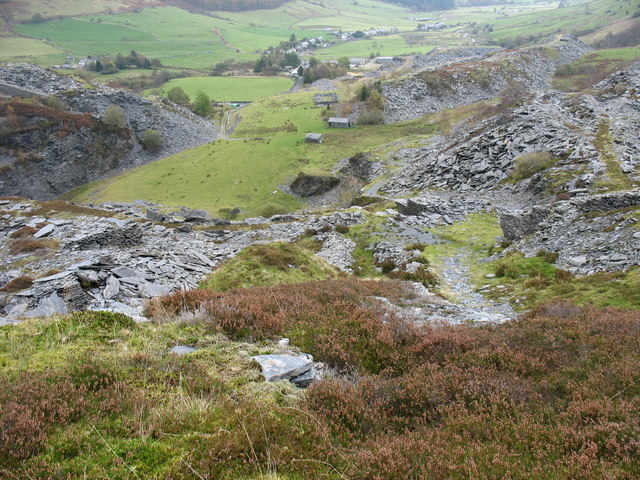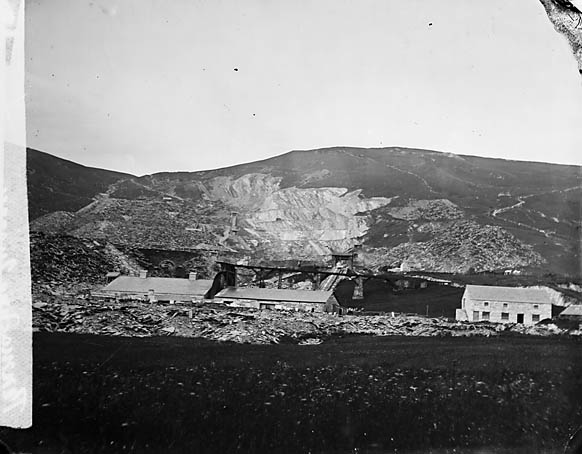Penmachno Quarry on:
[Wikipedia]
[Google]
[Amazon]

 The Penmachno quarry (also known as Cwm Machno quarry, Rhiwfachno quarry, or Tan-y-Rhiw quarry) was a slate
The Penmachno quarry (also known as Cwm Machno quarry, Rhiwfachno quarry, or Tan-y-Rhiw quarry) was a slate

 The Penmachno quarry (also known as Cwm Machno quarry, Rhiwfachno quarry, or Tan-y-Rhiw quarry) was a slate
The Penmachno quarry (also known as Cwm Machno quarry, Rhiwfachno quarry, or Tan-y-Rhiw quarry) was a slate quarry
A quarry is a type of open-pit mine in which dimension stone, rock, construction aggregate, riprap, sand, gravel, or slate is excavated from the ground. The operation of quarries is regulated in some jurisdictions to reduce their envir ...
near Cwm Penmachno
Cwm Penmachno (historically called Tre-Gynwal) is a village at the head of Cwm Machno in North Wales.
History
The village was built in the 1860s as a quarry settlement. The Penmachno quarry lay immediately south and above the settlement. High ...
, Conwy
Conwy (, ), previously known in English as Conway, is a walled market town, community and the administrative centre of Conwy County Borough in North Wales. The walled town and castle stand on the west bank of the River Conwy, facing Deganwy on ...
, North Wales
North Wales ( cy, Gogledd Cymru) is a region of Wales, encompassing its northernmost areas. It borders Mid Wales to the south, England to the east, and the Irish Sea to the north and west. The area is highly mountainous and rural, with Snowdonia N ...
. It was directly below the Rhiwbach Quarry. It was worked between 1818 and 1962.
History
The quarry was originally known as the Tan-y-rhiw quarry, and it was recorded working in 1818. By 1872, the quarry was employing 72 workers, rising to 178 in 1898 at its peak. In 1909, the quarry stopped working for two weeks due to a general depression in the price of slates. In 1937, Penmachno employed 108 quarrymen. It continued working after theSecond World War
World War II or the Second World War, often abbreviated as WWII or WW2, was a world war that lasted from 1939 to 1945. It involved the vast majority of the world's countries—including all of the great powers—forming two opposi ...
, eventually closing in 1962.
Transport
Unlike most Welsh slate quarries, it had no railway connection to the outside world, and most of the slate it produced was taken by horse-and-cart to a wharf on theRiver Conwy
, name_etymology =
, image = Boats in River Conwy.jpg
, image_size = 300
, image_caption = Boats in the river estuary at Conwy
, map =
, map_size =
, map_caption =
, pus ...
at Trefriw
Trefriw () is a village and community (Wales), community in Conwy County Borough, Wales. It lies on the river Crafnant in North Wales, a few miles south of the site of the Roman Britain, Roman castra, fort of Canovium, sited at Caerhun. At the l ...
. In 1868, the LNWR
The London and North Western Railway (LNWR, L&NWR) was a British railway company between 1846 and 1922. In the late 19th century, the L&NWR was the largest joint stock company in the United Kingdom.
In 1923, it became a constituent of the L ...
opened their line to Betws-y-Coed
Betws-y-coed (; '' en, prayer house in the wood'') is a village and community in the Conwy valley in Conwy County Borough, Wales, located in the historic county of Caernarfonshire, right on the boundary with Denbighshire, in the Gwydir Forest. ...
and from that date onwards slate could be hauled there, which was still a distance of nearly over rough mountain roads.
In the first decade of the 20th century a traction engine was purchased to haul the carts. This arrangement was later replaced by lorries. Some slate was hauled up to Rhiwbach Quarry and taken out to Blaenau Ffestiniog over the Rhiwbach Tramway
The Rhiwbach Tramway was a Welsh industrial, narrow gauge railway connecting the remote slate quarries east of Blaenau Ffestiniog with the Ffestiniog Railway. It was in use by 1862, and remained so until progressively closed between 1956 a ...
. There were proposals to link Penmachno and Rhiwbach quarries by tramway, but these proposals were never implemented.
Internally, the quarry had a number of gauge tramways and inclines. During the later years of operation a Motor Rail Simplex locomotive was purchased to work the lower tramway. Several proposals were made to connect the quarries by rail.
Geography
The quarry was near the head of the isolated valley of theRiver Machno
River Machno ( cy, Afon Machno) is a river in Snowdonia in north-west Wales. It is the first major tributary of the River Conwy, which it joins south of Betws-y-coed, past the Pandy Falls and the Machno Falls.
It has its source in the slopes at ...
, above Penmachno
Penmachno is a village in the isolated upland Machno valley, south of Betws-y-Coed in the county of Conwy, North Wales. The B4406 road runs through part of the village. The village is at the confluence of the Glasgwm and Machno rivers. It has ...
village. Its height on the mountain meant it had a relatively restricted water supply, and on several occasions work stopped due to drought, including in 1891. It was worked as a series of galleried pits, as well as underground chambers.
The highest point of the quarry was just above above sea level. The mills level, at the lower end, was at elevation. There were originally two pits, the upper working was known as Rhiw Fachno and the lower one was the main Cwm Machno quarry. Adits lead into the mountain from both pits to access the underground workings. About above the Rhiw Fachno pit was the quarry reservoir.
Geology
The five main veins ofOrdovician
The Ordovician ( ) is a geologic period and system, the second of six periods of the Paleozoic Era. The Ordovician spans 41.6 million years from the end of the Cambrian Period million years ago (Mya) to the start of the Silurian Period Mya.
T ...
slate that pass through Blaenau Ffestiniog are the North, Back, Narrow, Main (or Old) and South (or New) veins. As they head eastwards, the lower three thin out and disappear, so that by the time Cwt y Bugail Quarry is reached, only the North Vein and Back Vein are left. Immediately to the east of the Cwt y Bugail main adit, the strata are cut by the Dolwyddelan fault, and the same two veins re-appear at Rhiwbach and Penmachno, some further to the south east, and at a considerably lower altitude.
Bardic chair
The chair for the 2019 National Eisteddfod of Wales, held near Llanrwst, was made from slate from Penmachno quarry.References
{{Welsh Slate Quarries Slate mines in Conwy County Borough Bro Machno Railway inclines in Wales Industrial railways in Wales 2 ft gauge railways in Wales